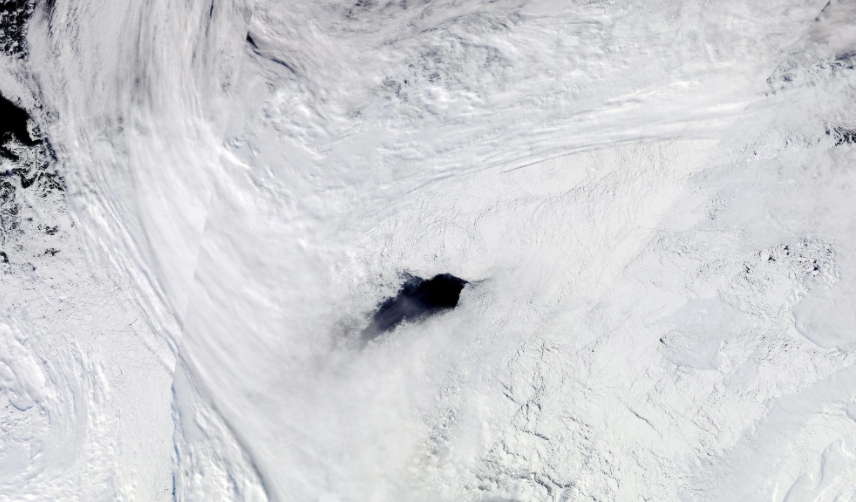Scientists from the USA, Australia and the United Arab Emirates have found that ice holes in Antarctic ice are formed mainly due to powerful warm air currents.
Such processes are intensifying and have a serious impact on the ecology of the planet.
This is reported in the journal Science Advances.
The researchers focused their attention on the Weddell Sea polynyas in the Southern Ocean near Antarctica.
The term "polynya" came to geographical science from the Russian language.
They designate a huge, temporarily open sea space, surrounded by ice.
In the Weddell Sea, giant polynyas tens of thousands of square kilometers in size appear every few years in winter, and then disappear again.
For the first time, researchers were able to prove that air "rivers" - streams of warm humid air that come to Antarctica from South America and melt ice - take an active part in the formation of such phenomena.
The last time such flows led to the appearance of a polynya in late winter - early spring 2017 (from mid-August to mid-September).
Polynya in the eastern Weddell Sea in September 2017
NASA
Study co-author Kyle Mattingly of Rutgers University (USA) noted that "polynyas have a strong impact on the physical and ecological processes in the Southern Ocean."
According to him, they act as giant "windows" in the sea ice, releasing huge amounts of heat from the ocean into the atmosphere, which changes the circulation of sea currents in the region and around the world.
“They also influence the timing and strength of phytoplankton (algal) blooms, which are the backbone of the marine food web.
Our research paves the way for a better understanding of climate variability and change in this region, ”said Mattingly.
As a result, the ice cover of West Antarctica is melting, which contributes to a rise in the level of the World Ocean, experts say.
Research results have shown that these processes have accelerated in the 21st century.
And if the entire Antarctic ice sheet melted, the water would rise by about 60 m. This would lead to flooding and inundation of densely populated coastal areas around the world.
The researchers note that with the predicted climate change in the future, air "rivers" will appear more often, and their length, width and impact on the ecosystem of the region will increase.
Scientists believe that the study of such processes will become an important part of future global environmental research.

